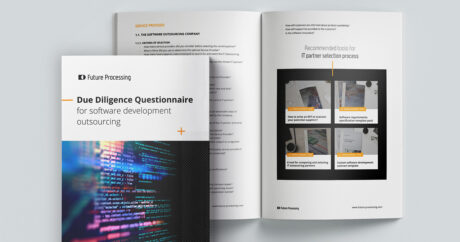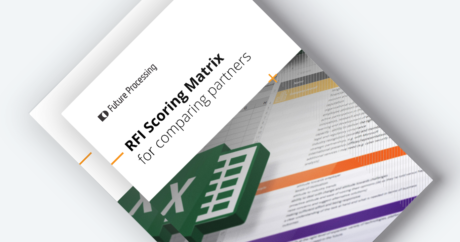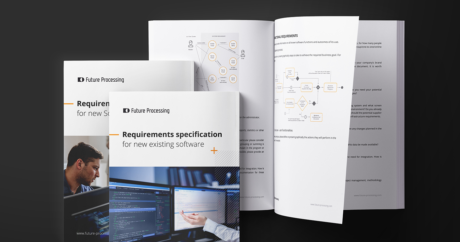Big insurance organisations live and breathe data. Surprisingly enough, these companies have only recently started to apply data solutions, and so they seek vendors who could deliver those solutions. But how to find the right provider to create just the solution the company needs? This is usually done through a request for proposal.
Understanding the Importance of Data in the Insurance Industry
Insurers operate on huge volumes of data about customers, properties, accidents, claims, premiums, and many more. However, the insurance industry has lagged behind in digital transformation as compared with other sectors, and too much relevant insurance data remains underutilised and dispersed throughout different systems. Modern insurance companies turn to data solutions to transform raw data into knowledge upon which they can build their services.
Data solutions is an umbrella term that covers different activities, such as data analysis, data processing, data modelling, data modernisation, data migration, or data visualisation. In the insurance industry, the main activities also include data cleansing, data correlation, data standardisation, data augmentation, and transforming unstructured data (e.g., from text) into structured data.
For example, data visualisation allows insurers to gain valuable knowledge from data and leverage decision-making concerning their key tasks: risk assessment, risk management, underwriting, and claims handling. Data analysis can support ML or AI algorithms to automate processing data about customers, e.g. age, sex, insurance history, health, and lifestyle also for better risk assessment and establishing adequate premiums. The analysis of historical data also proves valuable, because it allows to draw conclusions and pinpoint the reasons why, for example, a claim was rejected.
Data modelling, on the other hand, refers to structuring and organising insurance-related data in a manner that aligns with the specific requirements established within the London insurance market. These standards typically encompass data formats, terminology, and reporting protocols. They ensure consistency and compatibility across the market, facilitating accurate risk assessment and underwriting, as well as regulatory compliance. The adherence to the industry norms supports transparency and trust among stakeholders, ultimately benefiting both insurers and their clients.
The possibilities of data solutions applied to the raw data in this industry are nigh endless.
Effective RFP for Data-Driven Insurance Solutions: Why Is It Crucial?
However, to enjoy the benefits of data solutions for the insurance sector, insurers need someone to actually deliver those solutions. Insurance companies can always try to develop data technologies in-house but this may prove costly and time-consuming. Instead, many insurance companies turn to external suppliers who can offer tailor-made solutions that meet their needs. This is where a request for proposal (RFP) for insurance becomes really helpful.
A request for proposal – as opposed to a request for information or simple price quotes – is a formal process and it contains a detailed description of a company’s needs and business goals for a specific project. Its main purpose is to help select the most suitable supplier. An RFP in the insurance sector will help with:
- obtaining multiple offers for the project or services,
- widening the search to include different companies and services,
- reducing the risk of excessive costs or choosing the wrong supplier,
- ensuring that all bids are complete and accurate before selecting the best provider.
Generally, an effective and comprehensive RFP is a time- and money-saving process. It shortens the whole selection procedure and allows side-by-side comparison of different proposals.
How Will Data Change the Insurance Market in the Near Future?
Tapping into the raw data and finally utilising its full potential can become a game-changer in the insurance sector in the upcoming years. The main challenge for insurance companies is the use of many dispersed systems and various data sources. These are often scattered and duplicated, especially when they are both inside and outside of the company. As a result, finding and analysing data takes a lot of time. Applying data solutions such as cloud infrastructure allows insurance companies to have better availability, flexibility, and scalability of their tools. This is also boosted by cost optimisation and data security.
Another added value of data solutions is the shift of insurance companies from being product-centric to customer-centric. This entails, for example:
- individual, better-adjusted premium rates – safe car use or sports (health-promoting prevention) can lower policy prices,
- access to many services in one place,
- better customer experience – quick service, high quality, and consistent user experience.
Key Components to Include in Insurance RFP Process for Data Solutions
If you’re ready to find an external data solution vendor, a request of proposal document will come in handy. A successful RFP management relies heavily on a well-prepared RFP, which is crucial in the decision-making process.
Where can you get an RFP from? You can always create an RFP on your own, you can use a ready template for data solutions, or combine the two approaches and edit the template. Whichever method you choose, don’t forget about the following key components and considerations as well as other best practices.
Purpose and Scope of the RFP for Insurance
The goal of an RFP process is to help you select the best partner. Additionally, potential suppliers can find out if they are the right fit for your organisation and your data solution projects.
An effective RFP should provide the necessary details to support effective final selection. Identify your specific needs and the scope of your project. Define what you want to achieve with your project instead of describing what an example solution should look like.
Also, your RFP document can include questions to identify the prospective vendor’s:
- Experience
- Qualifications
- Detailed pricing
- References
- Project methodology
- Availability
- Delivery timeline
- Team profile
- Technical compatibility
You don’t have to include all of the point above. The goal is to create a detailed but not overly detailed RFP. However, these core subjects should help you to define your scope.
Technical Specifications and Requirements
A software requirements specification is a document that describes the software that you want your technology partner to develop for you. It should provide details concerning the desirable data solution you want to receive, including its goals, functional and non-functional requirements, and project glossary.
Other important sections include technical specifications, implementation requirements, and information about the users. You can specify what kind of systems, infrastructure, or other additional resources you already have or you need. Also, don’t forget about your data management and security requirements.
What’s more, technical specifications and requirements are a good place to add “knockout questions” in your RFP document. If a prospective supplier doesn’t answer positively to these key questions, even if they pass other requirements with flying colours, they are still excluded from the insurance RFP process.
Vendor Qualifications and Experience
Even if potential contractors are able to meet your technical specifications and requirements on paper, this still doesn’t mean they are the right fit. That’s why it’s also advisable to check their profile and ask for references from previous clients to show their experience. At this stage, if time and resources allow it, you can also consider asking for a presentation or even a demo of their existing data solutions.
Pricing Structure and Budget Considerations
It’s always better to state your budget clearly. Firstly, potential vendors can respond to your RFP with a more realistic document as they’d know what can be developed in given budgetary constraints.
Secondly, it also saves the time of your team as they don’t spend it reviewing responses that might later on be turned down by suppliers who wouldn’t agree to your budget.
Thirdly, transparency about your budget builds an open and honest foundation for your relationship with your future partner. This way, you can avoid starting off on the wrong foot when your partner expects more and is given less.
Evaluating RFP for Data in Insurance Market: What to Look for in Vendor Responses?
You’ve prepared and sent out your RFP to prospective suppliers. Now, it’s their turn for an RFP response process. What should you focus on when you assess their responses? What are the possible evaluation criteria?
First of all, look at how suppliers respond to your knockout questions. If they don’t meet these requirements, they are disqualified.
Secondly, focus on other technical aspects and details provided by the supplier. The key here is to find out how well they understand the specifics of the insurance market and what value their data solution can bring to your organisation.
Thirdly, check their portfolio, experience, references, reputation, and customer success practices. The vendor should be able to demonstrate their expertise in the relevant data solutions required to complete your project.
Setting the Stage for a Successful Strategic Partnership
A request for proposal can make or break your project for data solutions for insurance. If done wrong, you may end up with a technology partner who’s not up to the challenge and may fail to deliver a quality data solution. If done well, an RFP with a strong process behind it can not only result in a successful implementation of your data solution project by the right vendor but also lay the foundation for a successful and long-term partnership.


